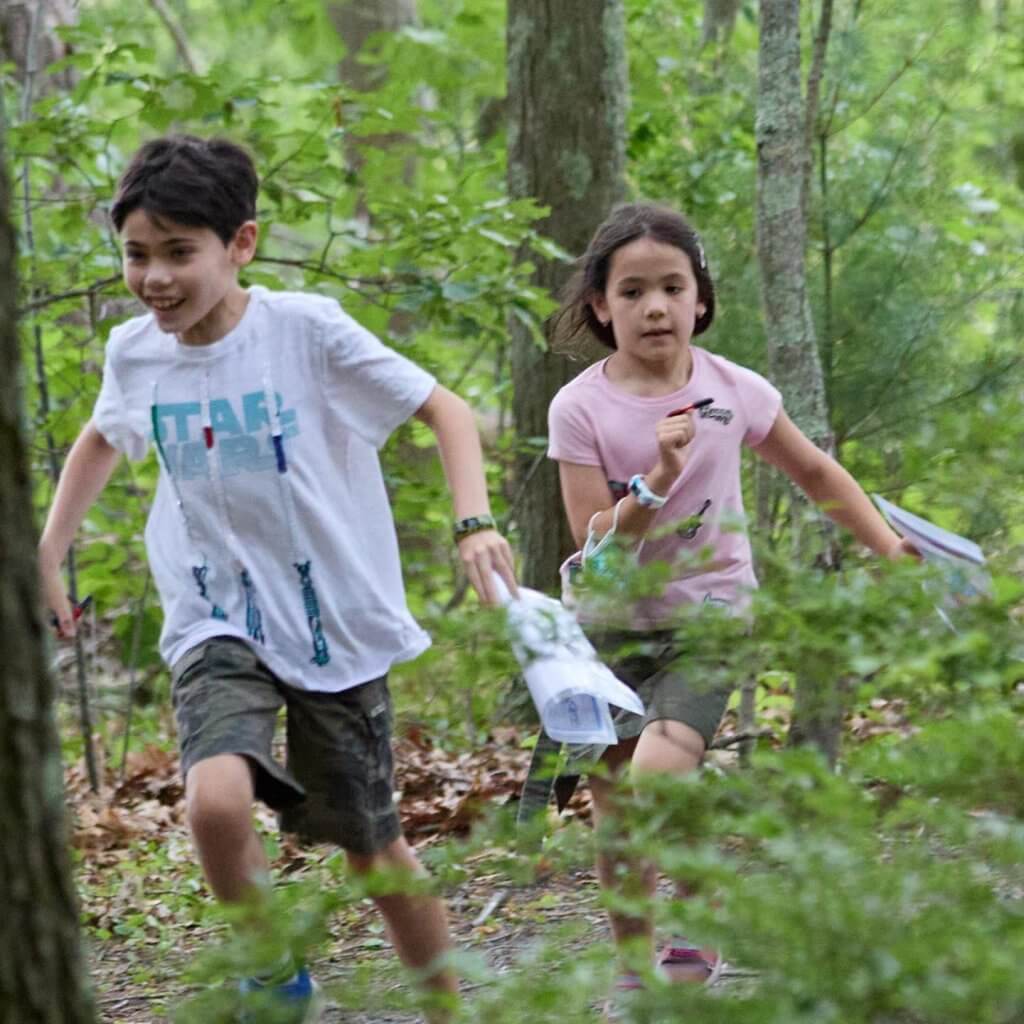A note from OUSA’s VP for Youth Initiatives:

As we return to holding National Ranking Events (NRE), I encourage everyone to think about kids who may have moved up a course – or two – during our hiatus from NREs. 12-year-olds who last competed on White in the fall of 2019 are now in their last six months of eligibility to run Yellow. Ditto for 14-year-olds moving from Yellow to Orange. These are big jumps in normal years, but made even bigger as most kids have not recently orienteered in major events with heightened attention to rules.
As we return to orienteering, we should be sure we are providing an experience for our youth aligned with the principles of the Orienteering Development Model, which emphasizes fun and play over a strict focus on competition for our youngest orienteers.
Fortunately, our Rules of Competition provide opportunities for us to support young orienteers in being able to focus on their races, be successful, and build confidence. About five years ago, OUSA adopted several key rule changes that are even more important during this time of transition. The rules are shown below in bold text.
A.28.5 Except at Orienteering USA Junior Nationals, White and Yellow courses may have open start times to allow parents to coordinate schedules with their children’s starts.*
Board rationale: This is a change from pre-scheduled start times intended to make events more family-friendly by allowing parents who are at events with their children to both compete, and still shadow their children. Clubs are encouraged to have the White/Yellow start as close to the parents’ start as possible, to accept parental requests for start times for their children, or to allow children to start at any time during the start window, and to simplify the start procedures as much as possible.
A.28.6 The competitors take their competition maps at the starting time at the start location or after the starting time at the map issue point. Except at Orienteering USA Junior Nationals, competitors on the White and Yellow courses may be given the map prior to their starting time, provided that the conditions are consistent for all such competitors.*
Board rationale: Allowing some time with the map before the clock starts allows them some time to plan a course. Event organizers may also allow parents/coaches to review the course with their children during this brief window to help them to plan for legs and review where problems may occur. This will help to ensure that children are successful on their courses, having fun, and progressing in their orienteering skills. If white and yellow competitors will be allowed to review their maps with a more experienced orienteer prior to their start time, this should be communicated to all competitors in advance to allow for proper planning by the competitor and their parents/coaches/experienced orienteer.
*The open start time and map preview does not apply to Junior Nationals, because Junior Nationals does not offer age-class awards.
Because kids are behind on their NRE experiences, we encourage organizers to be more liberal with their implementation of these rules for 2021 and into 2022
Putting my club volunteer hat on, here’s how we are planning to implement these ideas at NEOC’s New England Championship NRE to be held in Massachusetts this fall. Other clubs may choose different approaches.
- Open starts for kids 14 and under and their parents. Start/Finish close to parking.
- Single start, with an opportunity for kids on White / Yellow to review the map with a parent or volunteer before starting when they are ready. It’s also an opportunity to talk about punching, checking control codes, staying inside the bounded areas on the map, and what to do if you’re feeling mis-oriented.
- Being vigilant about course difficulty. We should design White, Yellow and Orange courses on the easier side within the competitive rules.
- Making sure White courses have handrails for every leg. We often assume that if a control is visible from the previous control, then it is “easy enough.” However, the part of the brain that processes spatial arrangement of multiple point features isn’t fully-developed until age 14. Where streamers are necessary, we plan to string them on the ground as a linear feature.
Want to learn more about the Orienteering Development Model and our approach to introducing kids to the sport? Try the Orienteering Development Model for OUSA Members on the Education Portal, with a focus on stages 1, 2 and 3. Each lesson has a short video and the text of the relevant ODM stage. The course is free for OUSA members.
Do you have more ideas? Email vpyouth@nullorienteeringusa.org. See you in the woods!
Tori Campbell
OUSA VP for Youth Initiatives
Photo credit: Dave Yee Photography
